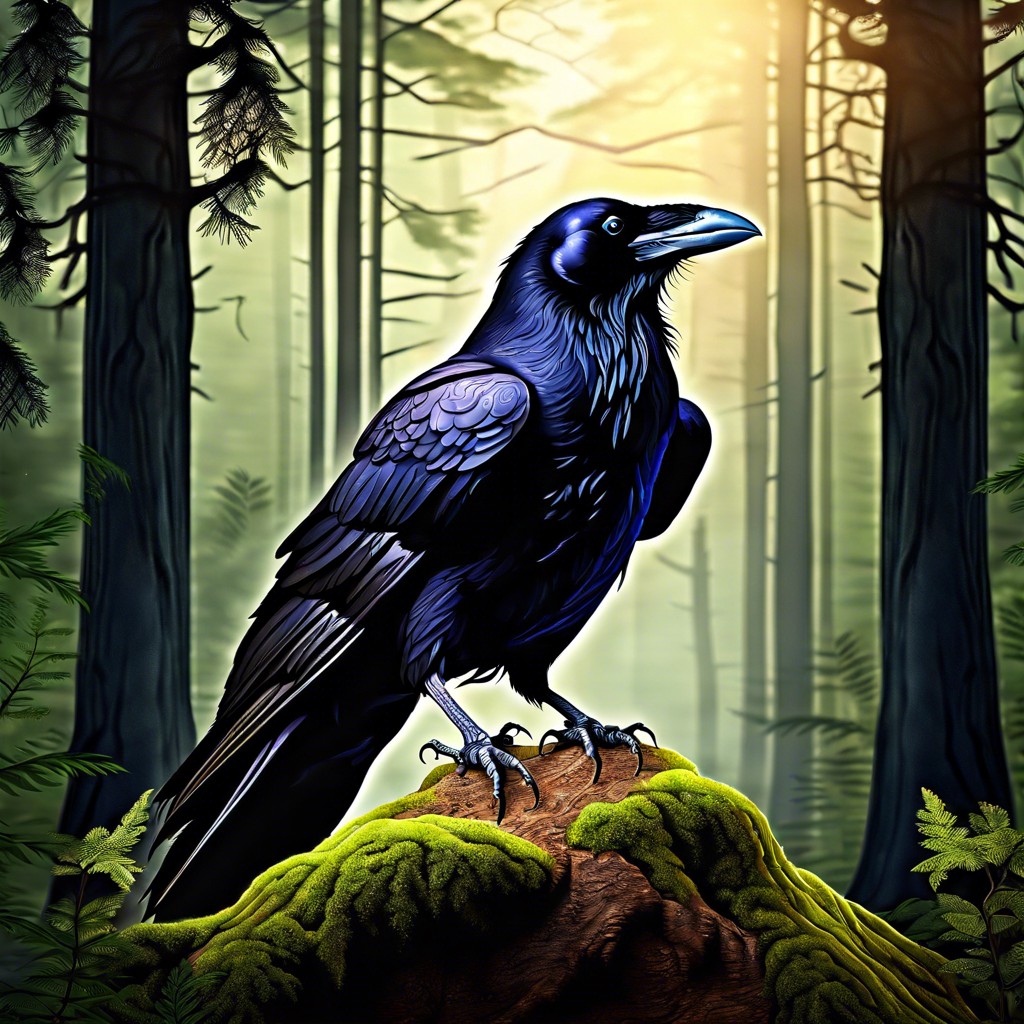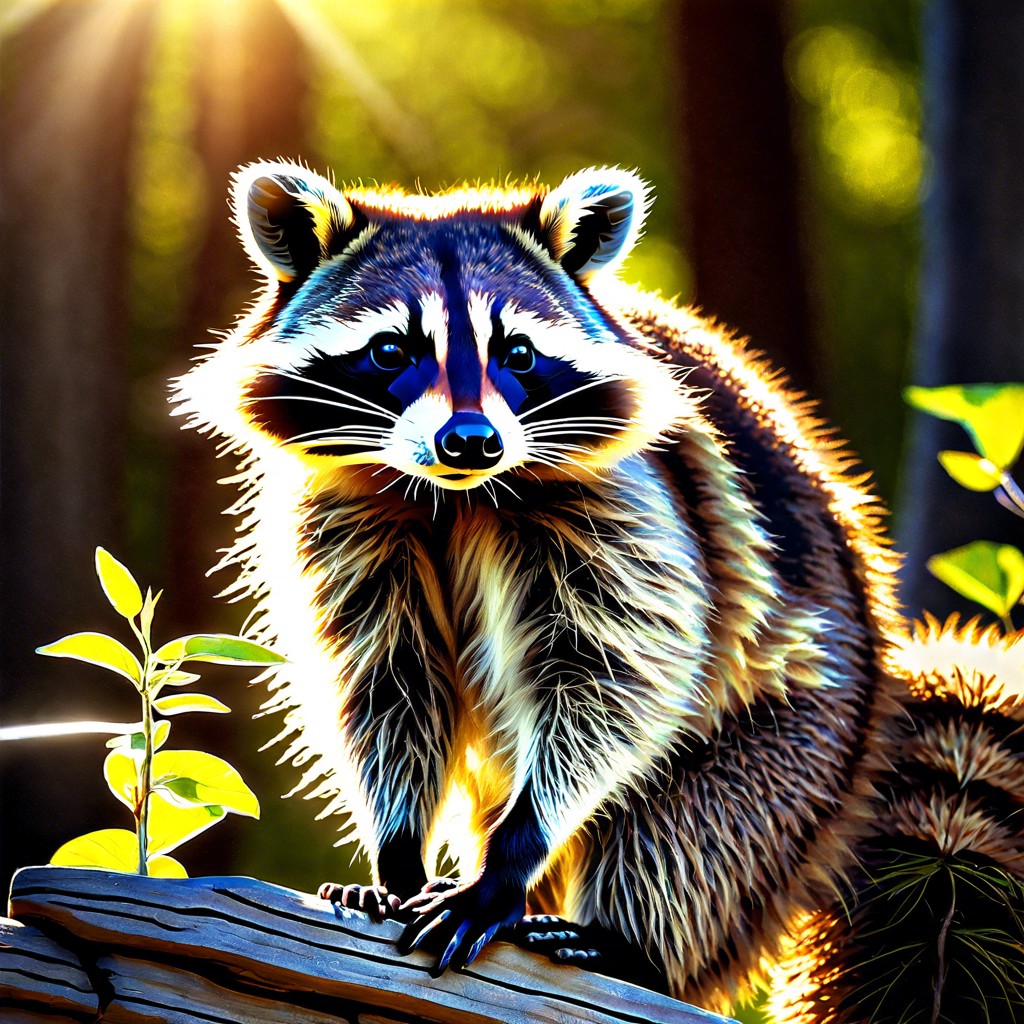Uncover the spiritual meaning of the raven as we discuss its symbolism and significance across cultures and belief systems.
Ravens are powerful symbols rich with meaning across cultures and mythologies. From Norse legends of Huginn and Muninn representing thought and memory, to the Celtic Morrigan’s association with war and fate, these enigmatic birds hold deep significance. Delve into the diverse interpretations ranging from Native American myths seeing them as creators and tricksters, to their role in Greek mythology as messengers of Apollo. Discover the wisdom, transformation, and divine connection embodied by ravens in this comprehensive look at their symbolic essence.
Key takeaways:
- Norse ravens Huginn and Muninn symbolize thought and memory.
- Celtic Morrigan associates ravens with war and fate.
- Native American ravens are seen as creators and tricksters.
- Greek mythology links ravens to Apollo and divine insight.
- Ravens embody wisdom, transformation, and connection to the divine.
Symbolism in Mythology and Folklore

In many cultures, ravens are seen as powerful symbols. Norse mythology features the ravens Huginn and Muninn, Odin’s trusted companions, representing thought and memory. They fly across the world, bringing back vital information.
In Celtic lore, ravens are associated with the Morrigan, a formidable goddess of war and fate. Their presence on battlefields signifies impending conflict or death.
Native American tribes often view ravens as creators and transformers. Seen as both tricksters and teachers, these birds hold a dual role, embodying the thin line between life and death, wisdom and folly.
In Greek mythology, ravens are linked to Apollo, the god of prophecy. They are his messengers, conveying divine insight to mortals. This role underscores their connection to foresight and wisdom.
Throughout various mythologies, ravens serve complex roles, embodying wisdom, transformation, and a deep connection to the divine.
Connection to Death and the Afterlife
Ravens have long been associated with death and the afterlife across various cultures. Their black feathers and carrion-feeding habits contribute to this dark symbolism.
In many mythologies, ravens are seen as messengers between the living and the dead. For instance, in Norse mythology, the god Odin had two ravens, Huginn and Muninn, who flew across the world to gather information.
In some Native American traditions, ravens are considered guides to the spirit world. They are thought to help souls navigate from the earthly realm to the afterlife.
Interestingly, ravens are not only bearers of bad news. In some tales, they act as protectors, ensuring the deceased safely reach their destination in the afterlife. These roles highlight their complex connection to death.
Seeing a raven can evoke feelings of both fear and reverence. The bird serves as a potent reminder of mortality and the mysteries beyond.
Intelligence and Wisdom
Ravens are renowned for their remarkable intelligence. Scientists have found that these birds possess problem-solving skills and can use tools, a trait shared with only a few other species, including primates. They can mimic sounds and human speech, showcasing their advanced learning capabilities.
In various indigenous cultures, ravens are considered bearers of wisdom. They are often depicted as creatures that guide and protect, embodying the profound knowledge of the natural and spiritual worlds. The Greeks associated them with Apollo, the god of prophecy, which further ties them to the concept of insight.
Observing a raven in nature may signal a time for enhanced awareness and intuition. Their presence encourages us to tap into our own wisdom, urging reflection and insightful thinking.
Omens of Good and Bad Luck
Many cultures view ravens as messengers between worlds, making their appearances significant.
In some traditions, seeing a raven foretells good fortune. Their presence can symbolize transformation and new beginnings. This is often tied to their intelligent nature and problem-solving abilities.
Conversely, ravens are sometimes considered harbingers of misfortune. Their black feathers and croaking calls evoke images of darkness and the unknown, leading to associations with bad omens.
However, perceptions of ravens are not universally negative or positive. Their role is more complex, embodying both the mysteries of life and the certainty of change. The context of their appearance usually dictates their meaning.
Understanding these nuances can provide deeper insights into the symbolism associated with ravens.
Role in Shamanic Traditions
Ravens hold a significant place in shamanic traditions across various cultures. They are often seen as messengers between the physical world and the spiritual realms. Their ability to fly and their dark, mysterious appearance make them ideal symbols for shamanic journeys.
In Native American traditions, the raven is considered a powerful spirit guide. Shamans may invoke the raven to gain insights or to reach deeper levels of consciousness. The bird’s keen intelligence and adaptability serve as inspiration for navigating the complexities of both the physical and spiritual worlds.
In Siberian shamanism, ravens are believed to assist in soul retrieval missions. Shamans journey with the raven’s spirit to reclaim lost fragments of a person’s soul, indicating healing and reintegration. This belief underscores the bird’s role in transformation and renewal.
Overall, the raven’s presence in shamanic practices highlights its multifaceted role as a connector, healer, and protector.





